Varkaus 作者: 来源: 发布时间:2021-10-16
一、所属省或是州,具体位置,人口,面积
Varkaus (before year 1929 Warkaus) is a Middle-Savonian industrial town and municipality of Finland. It is located in the province of Eastern Finland and is part of the Northern Savonia region, between city of Kuopio and town of Savonlinna.
The municipality has a population of 20,830 (31 January 2019) and covers an area of 524.48 square kilometres (202.50 sq mi) of which 138.45 km2 (53.46 sq mi) is water. The population density is 53.96 inhabitants per square kilometre (139.8/sq mi).
The municipality is unilingually Finnish. Oddly enough, 'Varkaus' translates to 'theft', even though it is not the reason for giving that name to the city. In old Finnish the same word also meant strait, and this city is located in the lake district on straits between two parts of Lake Saimaa. An extension of the Saimaa Canal passes through the town.
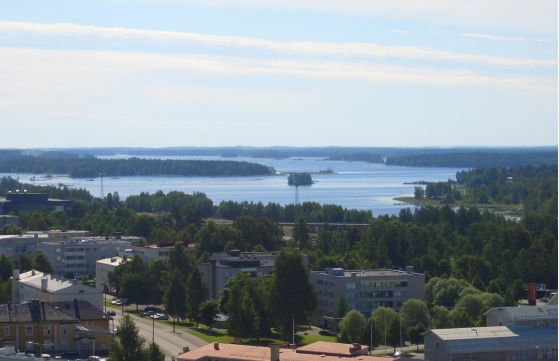
https://www.varkaus.fi/
二、自然地理
1.地理条件
Varkaus is located in the southern part of Pohjois-Savo province. Its neighboring municipalities are Heinävesi, Joroinen, Leppävirta, Rantasalmi and Savonlinna.
At the end of 2017, there were 21,155 inhabitants in Varkaus, of whom 19,178 lived in agglomerations, 1,646 in sparsely populated areas and the coordinates of the place of residence of 331 inhabitants were unknown. The degree of agglomeration is calculated for those residents whose coordinates of residence are known; The agglomeration rate in Varkaus is 92.1%. The population of the agglomeration of Varkaus is divided between three different agglomerations:
There are several waterway channels in Varkaus: Alajärvi canal, Piensaari canal, Pitkälänniemi canal, Pussilantaipale canal, and Taipale Canal.
2.交通情况
Varkaus is located at the intersection of Highways 5 and 23. The Pieksämäki – Joensuu line also runs through Varkaus. In the neighboring municipality of Varkaus, in Joroinen, is Varkaus Airport, which has since been silenced and transformed into an unsupervised aerodrome.
There are no longer any scheduled flights to Varkaus airport. The closest airports with regular passenger traffic are in Kuopio, Jyväskylä, Joensuu and Savonlinna. All of these entail at least an hour on the road, and only have flights from Helsinki anyway, so flying is not a practical alternative for getting in.
Varkaus is situated on the shores of Lake Saimaa which is accessible from the sea via Saimaa Canal.
https://en.wikivoyage.org/wiki/Varkaus#Q683525
三、经济发展和规模
The city's financial statements for 2019 were recorded 6.3 million € in surplus. To get a surplus has been carried out by dismantling the accounting operations investment reserves. Tax revenues decreased and the equity ratio weakened somewhat.
In order to strengthen the economy, the city's organizational reform should be implemented. Prioritization of investments to be timed and longer-term financing would bring relief the city's economy. Alongside loan financing, the possibility of leasing financing should be raised. The city should find out how it would be possible to dispense with what is considered unnecessary real estate and maybe get sales revenue from them.
The hospital campus is well underway. Hope for a new hospital and new treatments puts the increase in spending on health care under control. Positive investment in projects is the industrial expansion plan and the center of attraction construction. Hopefully, both will create new jobs and at the same time increase tax revenue into town.
There are also numerous threats to the city’s economic development that need to be considered when we make decisions. The city's population is declining, the elderly population is growing, the number of working-age people is declining, the number of children and young people is declining. Unemployment figures are too high and repair debt worries. The growth in the number of staff in the city should be brought to a halt. School network reform should be achieved as the reform would bring significant savings. Central to the development of the city of Varkaus is a diverse and vibrant corporate structure, and closer cooperation between municipalities and companies to promote business life and the tax revenue base to strengthen.
The City of Varkaus. 2019 Varkaus Municipal Financial Analysis. https://www.varkaus.fi/varkauden-kaupunki/talous
四、产业特点/重点项目
Varkaus is a distinct industrial city, which originally grew up around the Varkaus mill, founded in 1815 by Gustaf Wrede, originally primarily an ironworks, with local sea ore as a raw material. During the 18th century, it was a garrison town to defend the Swedish border's eastern border. The now Stora Enso- owned Varkau mill, which now mainly manufactures ktaftliner, surface layer for Wellpapp, currently (2016) employs approximately 400 people.
The city of Varkaus was awarded several prizes in the Municipal Working Life Development Program. The Institute for Social Welfare and Welfare awarded the participation of Varkaus as the best municipality in Finland.
In August 2019, the city council approved an economic rebalancing program. The programming period is long and long until 2025. Its main content is based on personnel planning. The purpose is to natural exit, ie not filling part of the vacancies vacated through retirements. Only a more detailed study is currently underway to show how widely this is possible and what other means may have to be used to rebalance the economy.
The City of Varkaus. 2019 Varkaus Municipal Financial Analysis. https://www.varkaus.fi/varkauden-kaupunki/talous
五、风景名胜,景点( attractions)
1. Museum of Mechanical Music
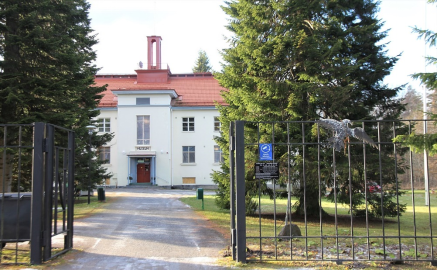
Mechanical Music Museum is in Varkaus, located in the museum. It is located in the Lehtoniemi district in a former nursing home. Due to its experience and the way it is presented, a tourist destination is sometimes called a "museum". Among other things, there are positives and other automatic players.
The museum's collections are based on the private collection of the German-Finnish Kempf family, which they brought from Germany to Finland and displayed in 1981, initially in Tuusniemi in the closed primary school building in Hiidenlahti. From there, the collection was moved to its current location in Varkaus in 1988. The collection initially included 70 mechanical instruments. By 2018, about 400 objects had already accumulated in the collection. The museum also offers music equipment repair, restoration, and appraisal services.
During the tour, the 75-player orchestra Poppers Goliath, which rises to a spectacular five-meter height in its hall, and the cheerfully colorful and flamboyant street poster Amadeus, whose melodies evoke a market atmosphere, will be heard during the tour. Steinway-Welte, the automatic piano, plays with perfect nuances the unforgettable compositions of immortal musicians whose chords bring Hoffman, Busoni and many other pianists to life. The roar of the wings of yesteryear can also be heard in the joyful rallies of hand-cranked positives where the positives delighted walkers and perhaps even the pet monkey spiced with fun tricks.
https://fi.wikipedia.org/wiki/Mekaanisen_musiikin_museo
2. Taipale Canal
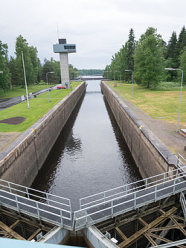
The Taipale canal is a half-kilometer-long barrier canal in Varkaus, between Unnukka and Haukivesi Siitinselä.
The canal had been completed in 1856. This led to an increase in traffic and the Taipale canal became cramped. The decision to build a new canal came as an imperial letter of command in July 1865.
The commencement of construction work was postponed to December 1867. The work thus coincided with the great years of famine. Information about job opportunities and the payment of wages as grain was widely circulated. A total of 51 keepers came to the site, including Ostrobothni. In January 1868, there were 600 men at work, many of them still with their families. Several lived in pits. Primitive conditions and diseases caused a tragedy, 281 people were buried in April - May 1868 alone. In 1936, the parish of Varkaus erected a monument to those who died on the site at the burial site in Varkaus. The canal was opened in a new location on September 16, 1871. It was 564 meters long and had two locks.
https://fi.wikipedia.org/wiki/Taipaleen_kanava
3. Warkauden Klubi
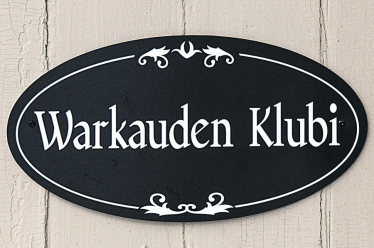
Warkauden Klubi (Anti Club) is right on the Varkaus in the center of the mansion, which was transferred to Terijoki to its current location in Varkaus Päiviönsaareen in 1876. Anti club has been operating in its history, ironworks cartridge residence, a hotel, as a restaurant and virkamiesklubina. Today, it is possible to organsidents CGE Mannerheim, Lauri Kristian Relander and Urho Kekkonen, among others.
The beginning of a new kind of club activity can, with good reason, be placed around the mid-1980s. The journals show that at that time the club business was developed from a completely new starting point. The decision-makers at the time made a list of club members. At the end of 1986, the club had 470 eligible members. By no means were all working and some of those on the membership list had already passed from time to eternity. A kind of revival in the 1980s is shown by a review of the dates of joining as a club member. According to the membership list, there were 57 members who joined before 1970. Between 1970 and 1975, the club had 77 members. Over the next five years (1976–1980), 90 willing people were accepted into the club. Between 1980 and 1985, 177 people became members.
六、历史文化
1.历史
The first written mention can be found in 1323 in the Pähkinäsaari Peace Book, where one of the landmarks is the Lappish winter village on the shores of the Sith (now Siitinselkä). Permanent settlements in the area began to emerge in the 15th century at the time of the completion of Olavinlinna (a medieval castle in Savonlinna), and at the turn of the next century, a fishing crown was established in Varkaus. Varkaus was close to obtaining city rights in the 18th century, but Kuopio did.
In 1792, a naval base was established in Varkaus by Royal Decree, which housed the “Voluntary Company of the Navy Regiment of the Royal Army Navy”. For this reason, Varkaus was called Ship Choice. The shipyard was in operation until the Finnish War, when Russia took over the entire territory of Finland. The city still has Laivalinnankatu.
Varkaus developed during the 19th century into a major industrial center (wood and paper industry and shipbuilding) thanks to the hydropower available and because of its excellent location along the waterways. Anti- Taipale Canal was first built in Finland shut-off channel, and it enabled the upper Leppävirran route combining ship traffic Saimaa with the region's waterways.
The zoning work in Varkaus began at the beginning of the 20th century, when Ruukki in Varkaus became the property of A. Ahlström Osakeyhtiö and Walter Ahlström became the company's CEO. Ahlström set out vigorously to develop the wood processing industry in Varkaus. Ruukki's population grew strongly during the major years of construction. Ruukki was responsible for zoning as well as housing policy and also for public duties while Varkaus was still without municipal independence.
Walter Ahlström had a vision of an entire city that would be formed around industrial facilities. Ahlström was actively involved in the planning of his city, his aim was to create a new kind of industrial community in which all functions were part of a whole.
A. Ahlström Osakeyhtiö ordered the first town plan of Varkaus in 1913 from architect brothers Ivar and Valter Thomélé. These parts were connected by Ahlströminkatu, a boulevard-like park street. The Civil War (1918) and the trauma left after it marked the spiritual atmosphere of the factory site for decades. The division into reds and whites persisted even after the war.
Varkaus came taajaväkinen community in 1928, an independent Leppävirta and Joroinen municipalities cut from the township in 1929 and a city in 1962.
2. 文化体育
Varkaus has many cultural educational programs aimed for youths. The Verso Children's Cultural Center is a networked children's cultural center formed by municipalities under the auspices of the City of Varkaus and Soisalo College.
In addition to the administrator city of Varkaus , the network consists of the municipalities of Pieksämäki , Joroinen , Leppävirta , Heinävesi , Juva , Rantasalmi and Hirvensalmi . In addition to its member municipalities, Verso works on projects and also provides services in other areas.
https://www.versoverkko.fi/
七、其他信息
Varkaus's vision is:
"In 2040, Warkaus will be a well-connected, forward-looking, international industrial city with 62,000 inhabitants in the heart of Eastern Finland, where diverse entrepreneurship is valued. We are a channel to the world. For us, sustainable development and social responsibility are core values. We invest in community and inclusion. We have high quality and close to the resident services. Everyday life is functional and leisure time empowers along nature, waterways and culture. "
Varkaus’s strategic goals are:
with 62,000 inhabitants, is an attractive and vibrant economic area in Eastern Finland
home to well-to-do people
made up of vibrant neighborhoods
strong economy secures vitality
To ensure that the top goals are achieved, Varkaus has defined measures that will be refined in cooperation with city residents, subsidiaries and associated communities, local companies, organizations, supervisors and staff, etc. during the implementation of the strategy.
As the strategy begins to implement, Varkaus will refine and agree on how to strengthen and reform municipal democracy forums and channels, involve local residents in strategy implementation and evaluation, communicate modernly and boldly, inspire employees to work, meet digital society challenges and guide subsidiaries and associates toward common goals.
https://www.varkaus.fi/varkauden-kaupunki/kaupunkistrategiat/strategiaty%C3%B6?navref=header-list
八、联系方式
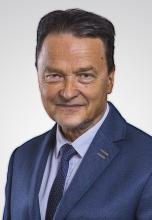
Mayor: Tsupari Hannu
Telephone: 040 512 8260
Email: firstname.lastname@varkaus.fi
